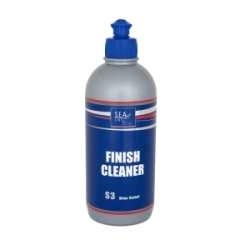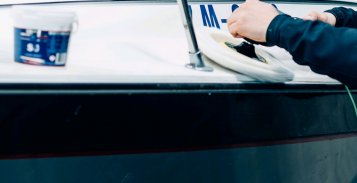
Analyzing the most common use of S3 liquid so far we have come to the conclusion that our customers use it primarily to clean the surface after polishing, and for protection is preferable to use wax S4.
We concluded to modified S3 liquid to meet the needs of our customers and produced the next generation S3 FINISH CLEANER product.
The new S3 FINISH CLEANER:
– removes the remnants of polishing dust from the surface,
– allows check quality of the polished surface
– used as final step of the polishing process to significantly emphasize the gloss.
Does not contain silicone, teflon and fillers.
Used together with other Sea-Line polishing materials, gives excellent results on gelcoats and lacquered surfaces.
More information : S3 Finish Cleaner

Disculpa, pero esta entrada está disponible sólo en Polaco.

Come and join us at METSTRADE 2023, METSTRADE the best event for marine industry professionals, happening from November 15th to […]

Visit us and our production plant without traveling

New in the 2023 season is a new polishing wool The new black and white polishing pads in premium quality […]
Do not add more hardener, because after the base has cured, the remaining hardener will react with subsequent layers, which will be applied to the surface and cause defects. For the product to work properly, please follow the proportions given by the manufacturer.
Yes, you can mix Sea-Line polyurethane paints. The only difference are the pigments of polyurethane paints that determine the color of the paint. But remember to keep the right proportions of base, hardener and thinner.

Para rellenar cavidades y hacer frente a las desigualdades causadas por daños o durante el curso de la producción

Barcos de superficie de impacto de las actividades de ósmosis y la corrosión destructiva en ambientes hostiles

Protección contra el agua y contra los efectos negativos de los rayos UV

Proteger la parte inferior de la embarcación antes de las incrustaciones de algas y conchas. Protección contra el agua

Eliminación efectiva de arañazos, color refrescante y gelcoat brillo o pintura

Preparaciones especializados para la limpieza y restauración efectiva

Laminación, encolado y relleno de fisuras en gelcoat

Una serie de productos útiles durante el constructor de barcos de trabajo